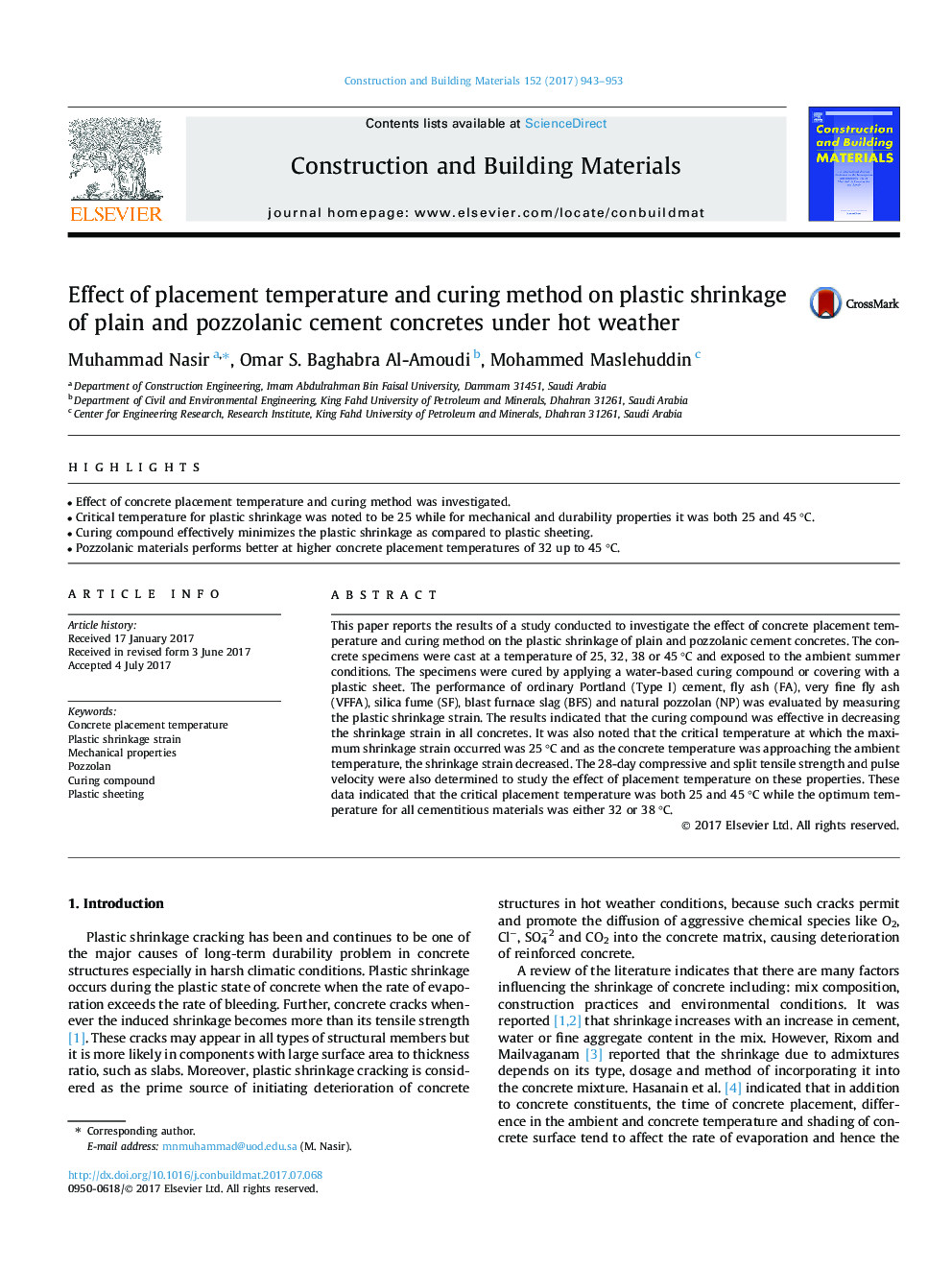| Article ID | Journal | Published Year | Pages | File Type |
|---|---|---|---|---|
| 4912823 | Construction and Building Materials | 2017 | 11 Pages |
Abstract
This paper reports the results of a study conducted to investigate the effect of concrete placement temperature and curing method on the plastic shrinkage of plain and pozzolanic cement concretes. The concrete specimens were cast at a temperature of 25, 32, 38 or 45 °C and exposed to the ambient summer conditions. The specimens were cured by applying a water-based curing compound or covering with a plastic sheet. The performance of ordinary Portland (Type I) cement, fly ash (FA), very fine fly ash (VFFA), silica fume (SF), blast furnace slag (BFS) and natural pozzolan (NP) was evaluated by measuring the plastic shrinkage strain. The results indicated that the curing compound was effective in decreasing the shrinkage strain in all concretes. It was also noted that the critical temperature at which the maximum shrinkage strain occurred was 25 °C and as the concrete temperature was approaching the ambient temperature, the shrinkage strain decreased. The 28-day compressive and split tensile strength and pulse velocity were also determined to study the effect of placement temperature on these properties. These data indicated that the critical placement temperature was both 25 and 45 °C while the optimum temperature for all cementitious materials was either 32 or 38 °C.
Keywords
Related Topics
Physical Sciences and Engineering
Engineering
Civil and Structural Engineering
Authors
Muhammad Nasir, Omar S. Baghabra Al-Amoudi, Mohammed Maslehuddin,
